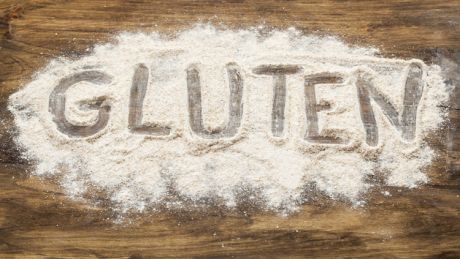Gluten: 5 things that you need to know
The five most important things that you need to know about gluten intolerance and celiac disease

Surely you’ve met someone who’s jumped on the trendy ‘gluten-free’ bandwagon that seems to be rolling around town at the moment. It’s very much a case of ‘that escalated quickly’; as people have moved from having genuine gluten allergies to thinking that it’s the latest diet fad to help them lose weight. Somewhere amongst the mass hysteria it would seem that a lot of the key nutritional points to do with gluten and the difference between having an allergy and just not eating it to lose weight has been lost in translation. This will clear things up for you:
1. What is gluten and where is it found?
It’s a fairly broad term for a variety of proteins known as prolamins. Each of the grains contains its own specific prolamin. It is the prolamins contained in wheat, (gliadin), rye (secalin), and barley (hordein) that are responsible for the bad allergic reaction in some people. Gliadin from wheat is the primary troublemaker for those with gluten intolerance, studies have found that hordein and secalin from barley and rye also have chemical compositions that are similar enough to gliadin to cause the same reaction in the body.
For those who have a severe intolerance to gluten, oats may also trigger a response. It has also been found that various strains of quinoa have varying prolamin content, making only a few types of quinoa gluten-free.
2. Gluten-free foods can be processed also
A lot of people tend to be under the assumption that all unhealthy processed foods must contain gluten while gluten-free products are not refined or processed, but this isn’t the case. As the gluten-free lifestyle has exploded in popularity the market has been flooded by more GF products than ever, many of which are highly processed or made with refined versions of gluten-free grains, such as white rice. Don’t be fooled into thinking that everything GF is healthy.
3. What you do eat when you are GF is just as important as what you don’t eat
The obvious thing to concentrate on when you go GF is getting rid of foods, but in order to balance your diet and make sure that you’re taking in a broad spectrum of nutrients, it is also very important to emphasise what you do eat. There are plenty of nutrient-packed whole grains that are naturally gluten-free. So if you’re used to putting pasta next to meat and vegetables as your go-to side dish you can replace it with most whole grain rices (brown, red, black or wild) or roasted organic corn, don’t just cut out that food group all together.
Fresh veggies and fruits, beans, lentils, and nuts are also gluten-free, so if you used to nibble on crackers, pretzels, or cookies, trade them for wholesome snacks, like veggies with hummus, berries with nuts, or roasted chickpeas. One of the key benefits of adopting a gluten-free diet is that it’s an opportunity to reinvent the way you eat. Take it on it by seeking out superfoods, so in addition to getting rid of gluten, you’ll also be embracing a wide variety of nutrients that will help you look and feel your best.
4. Not eating gluten may help those who do not have Celiac disease to feel better
Of course people who have Celiac disease are medically required to eliminate gluten from their diet completely as it can trigger symptoms such as extreme stomach pain or bloating.
Sign up for workout ideas, training advice, reviews of the latest gear and more.
This happens because in people with Celiac, gluten causes the immune system to damage or destroy villi, the tiny, finger-like outgrowths that line the small intestine like a microscopic plush carpet. Healthy villi absorb nutrients through the intestinal wall into the bloodstream, so when they become damaged, chronic malnutrition occurs, which is typically accompanied by weight loss and exhaustion. In people with this diagnosis, avoiding gluten is the only way to reverse the damage.
However, people who test negative for Celiac may also benefit from going gluten-free if they’re experiencing a condition called gluten intolerance, or gluten sensitivity. While it’s not the same as Celiac disease, consuming gluten can cause bothersome side effects in many people, including flu-like feelings, bloating and other gastrointestinal problems, mental fogginess, and fatigue.
5. Living gluten-free won’t make you lose weight for certain
There are a lot of people who adopt the GF lifestyle in order to lose weight, as a way of controlling the amount of carbs that they’re eating. This tactic has been known to completely backfire however, and result in people actually gaining weight instead of dropping it. That's because they consume gluten-free packaged products that are often just as high in saturated fat, sugar and sodium as other junk food, and these products often contain high-glycemic refined ingredients like white rice flour or fillers like potato starch that can affect your blood sugar and trigger cravings.
If your main aim of going GF is lose weight try and avoid the pre packaged GF products. Instead, try adding extra fruit and vegetables to your meals as a replacement for the gluten based products.
Coach is a health and fitness title. This byline is used for posting sponsored content, book extracts and the like. It is also used as a placeholder for articles published a long time ago when the original author is unclear. You can find out more about this publication and find the contact details of the editorial team on the About Us page.

